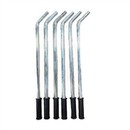Regardless of the degree of modification, vehicles must comply with some basic principles to obtain license plates. One of the more important conditions relates to the volume and weight of the vehicle. In addition, there are some provisions concerning details. For example, according to Item 2 of Article 55 of the [(Japan) Road Traffic Law], any modification shall not hinder the driver's vision and steering wheel operation, nor interfere with the normal efficacy of the rear-view mirror and exterior lighting system. At a more careful level, there are also corresponding principles. For example, when replacing the camshaft, the engine will never exceed the exhaust standard.
The Japanese law on modification without declaration lists more than 80 types of modified parts without declaration, which are also collectively referred to as [designated parts]. They are roughly divided into two categories, namely accessories and parts related to driving performance. Each category is subdivided into several groups (see Table 2 for details). If the vehicle is simply refitted with [designated parts], and if there is any violation of the above general principles (such as no significant change in weight, and no interference with driving or endangering the driving performance of the vehicle) and [security benchmark] after refitting, the owner will not need to change the registration information of the vehicle. In order to prevent consumers from buying unqualified parts, the [designated parts] on sale in Japan must pass relevant tests to prove that the products meet the [security benchmark]. In this way, the buyer can buy the product at ease as long as he/she confirms that the product is attached with a qualified label, and he/she is not afraid of violating the refitting laws.
What if the modified parts do not belong to [designated parts]? At this time, we will act according to the general principles. Generally speaking, if the vehicle does not exceed the volume after modification. The upper limit of weight change, the light modified parts used meet the [security benchmark], and the owner does not need to change the registration information. It is worth noting that the installation method also has a wonderful effect, that is, even if the [designated parts] exceed the volume and weight limits, if the installation method is not permanent (welding type), the vehicle owner usually does not need to change the vehicle registration information (see Schedule 3 for details).










